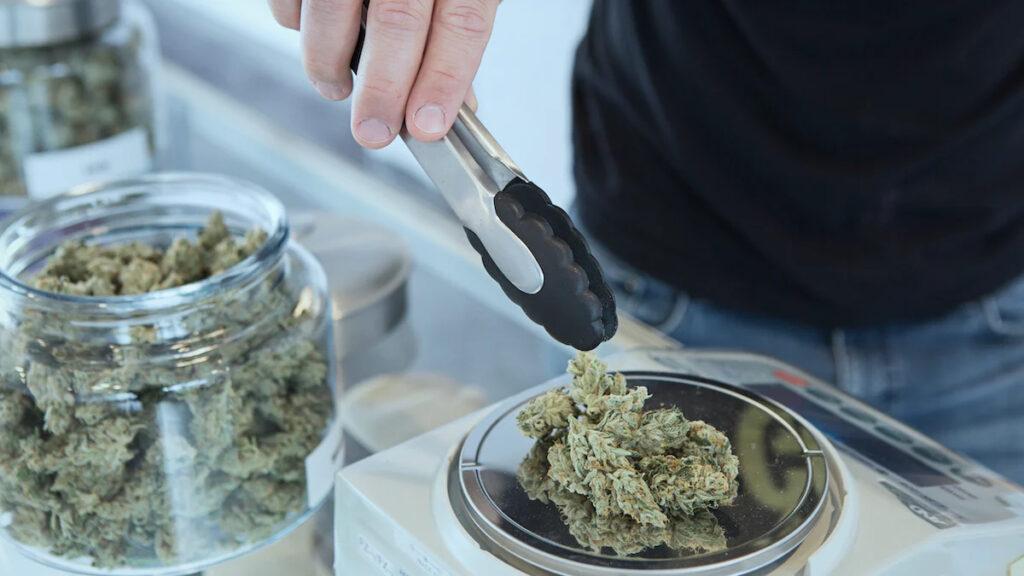
Understanding Migraines and the Role of Cannabis
Migraines are debilitating headaches that affect millions of individuals worldwide. The exact cause of migraines is still not fully understood, but they are believed to involve a combination of genetic, environmental, and neurological factors. These intense headaches can be accompanied by symptoms such as nausea, sensitivity to light and sound, and throbbing pain.
Cannabis has gained attention for its potential in relieving migraine symptoms. The cannabinoids found in cannabis, such as THC (tetrahydrocannabinol) and CBD (cannabidiol), have shown promise in managing migraines. THC is known for its analgesic properties, while CBD interacts with the body’s endocannabinoid system to provide relief.
In this article, we will delve into the science behind migraines and explore how cannabis may help alleviate their symptoms. Additionally, we will examine the role of CBD specifically in managing migraines. By understanding these aspects, individuals suffering from migraines can make informed decisions about alternative treatment options.
Benefits of Marijuana for Migraines
Migraines can significantly impact a person’s quality of life, making it crucial to explore alternative treatment options. Marijuana has shown promise in reducing the frequency and intensity of migraines, providing much-needed relief for individuals suffering from this condition.
1. Reducing Migraine Frequency and Intensity
Cannabis has been found to potentially decrease the frequency and severity of migraines. The cannabinoids present in cannabis, such as THC and CBD, interact with the body’s endocannabinoid system, which plays a role in regulating pain perception. These cannabinoids have analgesic properties that can help alleviate migraine-related pain.
Moreover, specific compounds in cannabis, such as terpenes and flavonoids, contribute to migraine relief. For example, beta-caryophyllene is a terpene found in cannabis known for its anti-inflammatory properties. By reducing inflammation in the brain and blood vessels, medical marijuana may help prevent migraines or reduce their intensity.
2. Alleviating Migraine Symptoms
In addition to reducing the frequency and intensity of migraines, cannabis may also alleviate common symptoms associated with this condition. Nausea is a frequent symptom experienced during migraines, and cannabis has shown antiemetic properties that can help relieve this discomfort.
Furthermore, marijuana’s potential mechanisms of action include modulating serotonin levels in the brain. Serotonin imbalances are believed to play a role in migraine development. By influencing serotonin receptors, cannabis may help regulate these imbalances and provide relief from migraine symptoms.
It is important to note that individual responses to marijuana may vary, and further research is needed to fully understand its effectiveness in managing migraines. However, these preliminary findings suggest that cannabis could be a valuable option for those seeking alternative treatments for their migraines.
The Role of CBD in Migraine Management
CBD, or cannabidiol, is a non-psychoactive compound found in cannabis that has gained significant attention for its potential therapeutic benefits. When it comes to managing migraines, CBD shows promise in providing relief and improving the overall well-being of individuals experiencing this condition.
1. Understanding CBD’s Potential Benefits
CBD has been studied for its potential therapeutic effects in managing migraines. It interacts with the body’s endocannabinoid system, which plays a crucial role in regulating pain perception, inflammation, and other physiological processes. By modulating these pathways, CBD may help alleviate migraine symptoms.
Research suggests that CBD possesses anti-inflammatory properties, which can be beneficial for individuals experiencing migraines. Inflammation is believed to contribute to the development and progression of migraines. By reducing inflammation in the brain and blood vessels, CBD may help prevent or minimize migraine attacks.
Furthermore, CBD has shown potential as an analgesic agent. It may help reduce pain sensitivity by interacting with receptors involved in pain modulation. This could provide relief from the intense headache pain associated with migraines.
2. CBD vs. THC: Choosing the Right Option
When considering medical marijuana for migraine management, it’s important to understand the differences between CBD and THC (tetrahydrocannabinol). While both compounds offer potential benefits, they have distinct characteristics that individuals should consider when choosing the right option.
CBD is non-psychoactive, meaning it does not produce a “high” sensation commonly associated with cannabis use. This makes it a favorable choice for those who want to avoid psychoactive effects or live in regions where THC is not legal or accessible.
On the other hand, THC does possess psychoactive properties and may induce euphoria or alter cognitive function temporarily. Some individuals find that THC provides better pain relief compared to CBD due to its direct interaction with cannabinoid receptors in the brain.
Ultimately, the choice between CBD and THC depends on individual preferences and desired effects. Visiting and speaking with your Purple Moose Educator can help determine the most suitable option for managing migraines effectively.
Considerations and Potential Risks
While marijuana and CBD hold promise in managing migraines, it is essential to consider potential risks and take necessary precautions for safe usage.
1. Side Effects and Safety Precautions
Like any medication or treatment, medical marijuana may have side effects. These can include drowsiness, dizziness, dry mouth, changes in appetite, and mood alterations. It is crucial to be aware of these potential side effects and monitor their impact on individual well-being.
To ensure safe usage, it is recommended to start with low doses of marijuana or CBD and gradually increase as needed. This allows individuals to assess their tolerance levels and minimize the risk of adverse reactions. Consulting with your Purple Moose Educator can provide personalized guidance on dosage and usage.
Additionally, responsible cannabis use involves avoiding driving or operating machinery while under the influence. Combining marijuana with alcohol or other substances should also be avoided due to potential interactions and increased impairment.
2. Legal and Regulatory Considerations
The legal status of marijuana and CBD varies across regions. While some areas have legalized both for medicinal purposes, others may only allow one or neither. It is important to understand the local laws regarding cannabis use before considering it as a migraine management option.
Consulting healthcare professionals who are knowledgeable about local regulations is crucial for obtaining accurate information about legality and accessing appropriate products. Abiding by these laws ensures compliance while seeking alternative treatments for migraines.
Furthermore, healthcare professionals can provide valuable insights into potential drug interactions between marijuana/CBD and other medications an individual may be taking. Understanding these interactions helps prevent any adverse effects or complications that could arise from combining different substances.
By being aware of the legal considerations surrounding marijuana/CBD use for migraines and following safety precautions, individuals can make informed decisions that prioritize their well-being while adhering to local regulations.
Conclusion: The Future of Cannabis in Migraine Treatment
In conclusion, marijuana and CBD show promise in managing migraines and providing relief for individuals suffering from this debilitating condition. The potential benefits of these alternative treatments include reducing migraine frequency and intensity, alleviating symptoms such as nausea and pain, and improving overall well-being.
Visit Purple Moose Cannabis to discuss and explore how cannabis may help. Our knowledgeable staff at our Toronto, Oshawa, and North York locations are ready to assist you.
Locations:
Address: 575 Laval Dr Unit #400, Oshawa, ON L1J 6X2
(289) 240-8338
Purple Moose Cannabis North York
Address: 5984 Bathurst St, Toronto, ON M2R 1Z1
(647) 258-9957
Address: 1383 Lawrence Ave W, North York, ON M6L 1A4
(647) 258-9956
[Disclaimer: The information provided in this blog is for educational purposes only and should not be considered as medical or legal advice. Consult with a healthcare professional for all medical issues and the use of cannabis products. Consumption of cannabinoids should be done responsibly and in compliance with local laws and regulations.]

